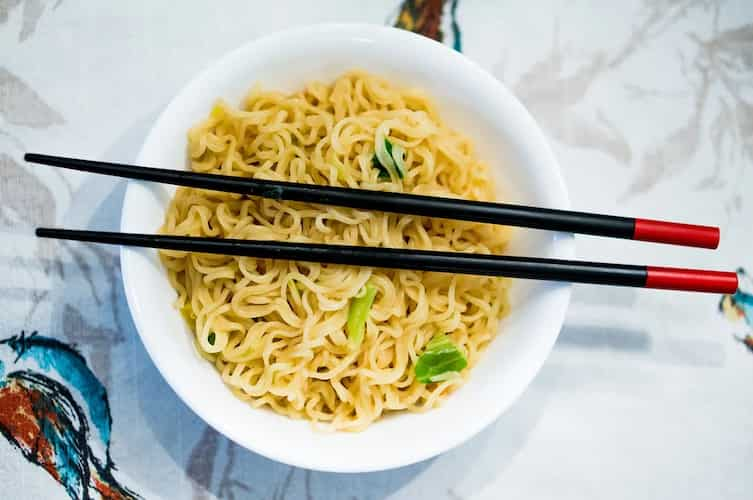When I was little, I could not distinguish between instant noodles and noodles made from scratch, which my family referred to as ‘chowmein’. It was a tough word for me. So I would call the latter ‘brown Maggi’ instead, and life was simple, until we ordered Singaporean noodles one day, and they happened to have a distinct red hue. That day, I learnt that there are many ways to make noodles, and they can be of different colours too; what they shouldn’t be, however, is a soggy mess.
We have all been there; we have memorised the recipe by heart; after all, it is the easiest thing to make noodles (at least on paper). You have to boil the noodles, take them out, prepare the sauce, toss the noodles in, mix it up on high flame, and you are done. It is supposed to be quick, easy and fail-proof yet, why do you often end up with a mushy bundle of noodles with a handful of softened veggies. You didn’t set out to make a porridge, did you?
You know you have gone wrong somewhere, but where exactly? The recipe only involved five steps? It turns there're a lot of factors such as the temperature of water in which you boiled the noodles or the time you allowed it to cook that can play a crucial factor here. Noodles are a gift of China to India; the two countries' proximity has resulted in many culinary exchanges. India has adapted noodles with many local tweaks. High on spice, high on grease is not how people savour noodles in most parts of China but that is how Indian streets like to make noodles. Noodles are essentially thin strands cut out from an unleavened dough. They are so sacred to the Chinese that they don’t even like making too many cuts in noodles for superstitious reasons. In other words, the longer the noodle, the better is it for you. But how do you cook them perfectly is the question.

What can you do to save your noodles?
When the noodles absorb too much water, they tend to turn soggy. So overcooking is out of the question. When the noodles are soaked in water, the starch tends to act up and slowly make the noodles softer over the time. When boiling them, make sure they are al dente or cooked enough for you to take a bite; once they reach that stage, take them out in a strainer. Putting them through a sieve is essential because they cannot keep absorbing more water.
An effective way to fix your overcooked noodles is to fry them in a pan with oil or butter till the edges are crisp. If you intend to have them in ramen, mixing the soup and the noodles just before eating, and heating the ramen bowl are effective ways to keep your noodles from getting soggy; at least, that’s what the experts say. Another tip experts cannot stress enough is the need to have them as soon as possible, the noodles will get soggier with time, you cannot stop starch from doing its work, you can, however, keep that phone on the side and devour the noodles while they are still hot and in best of shape.


